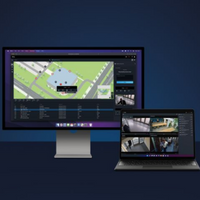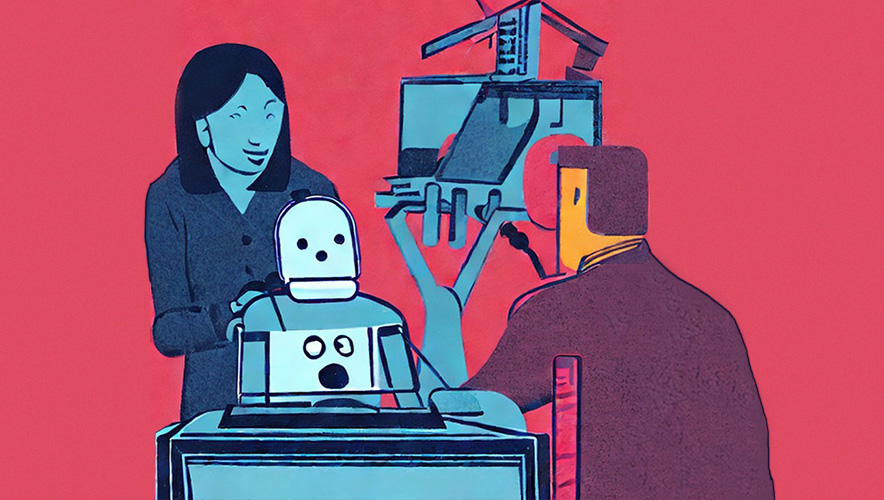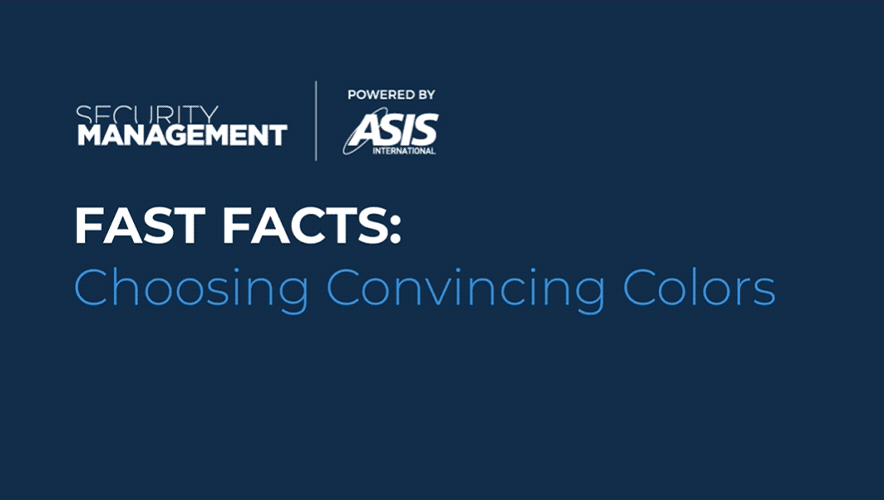Profits from Professionalism: How Healthcare Security Teams Can Boost Revenue Potential
Historically, security has been viewed as a necessary evil—an expense with no measurable return on investment. This is especially true in healthcare, where a variety of governmental and regulatory agencies not only require security, but also have standards surrounding the deployment of security resources.
This situation is exacerbated by the reality that most times someone must deal with security, it is for a negative reason, which creates a culture of negative interaction. Hospital security teams often deal with patients and staff on some of the worst days of their lives, and more often than not, this might be the only interaction that one ever has with healthcare security. But changing that perception can have incredible benefits to the hospital—both its patient care and its bottom line.
In my role as a hospital security director, I recently had the opportunity to move to one of the largest public hospitals in the United States. This is a safety-net hospital that is funded in large part by tax dollars, and it provides healthcare to underserved patient populations daily. Having started my healthcare security career at a solvent academic hospital and eager to impress my new employer, I wanted to understand exactly how our security department could contribute to generating revenue for the hospital, so I made an appointment with the CFO. It was a learning experience.
Quality, value, and patient experience are always critical guidelines in developing a roadmap to pursue a safe and secure environment. What is less clear is the role that plays in a culture where insurance companies, government grants, and Medicare/Medicaid reimbursements (largely based on patient experience scores) pay the patient’s bill instead of the patient him- or herself. To move forward, I needed to understand how this system works and how our security department could contribute to maximizing that reimbursement.
Broadly speaking, hospitals in the United States are paid through only a few vehicles, including third party reimbursement and self-pay. Many third-party payers or subsidies require that certain quality standards be met in care, sometimes called pay-to-play. It takes a skilled finance team to navigate an organization through the myriad hurdles to maximize revenue. This is even more difficult in a culture where there is both a need and expectation that nonprofit hospitals provide financial assistance and other programs to improve community health and be leaders of social responsibility.
Net patient service revenue is money generated from patient services collected from payors like private insurance companies and the Centers for Medicare and Medicaid Services (CMS). The hospital annually submits cost reports to the federal government laying out all income and operating expenses. The hospital may not include expenses such as advertising or lobbying—only clinical and administrative costs.
Straight billing is simple. A good analogy might be walking into a car dealership and paying full sticker price for your vehicle. If the hospital charges $100 for a tonsillectomy, you pay $100. This category is typical of a patient who doesn’t qualify for any benefits. Undocumented immigrant populations are a good example of who might fall under this category; they don’t have insurance and don’t qualify for government assistance. For this group, the hospital must accept the lowest fee they charge (eg. the CMS rate), but the patient must know to ask for it, and even then the hospital has the burden of proving the charitable need. This often results in bad debt that the hospital must compensate for elsewhere, perhaps by cutting expenses or finding alternate revenue sources.
When a third party like an insurance company is paying the bill, however, they may pre-negotiate a fixed price. The insurance company therefore has a different sales price. Both parties may agree to accept $85 for that same tonsillectomy.
Lastly is the pay-to-play category. This is based almost solely on the quality of care and the patient experience the hospital is providing, and this is where security can contribute to revenue.
Historically, hospitals were partially subsidized through grants and other initiatives. Today though, hospitals must “make the grade” to set the value of their services. There are a variety of national patient satisfaction survey rankings, including the U.S. News & World Report Hospital Rankings & Ratings, and the U.S. standard for patient satisfaction measurement, Hospital Consumer Assessment of Healthcare Providers and Systems (more commonly known as HCAHPS scores) which surveys a random sample of discharged patients 29 questions about their hospital stay. These are based on the patient’s perception of the care they receive. Marketing helps keep these scores high, but that cannot be calculated into the operating cost report submitted to the U.S. federal government.
So, how does a single security officer directly impact the revenue stream? By directly enhancing the quality and value of the patient experience.
SponsoredWhat is the power of unification?Unifying video management and access control, along with other functions, reduces costs and improves efficiency. If your organization is thinking of moving towards unified security, you’re not alone. With Genetec Security Center 5.11, we make unification even easier. |
This patient experience translates to higher scores which in turn translates to higher reimbursement compensation. We do this at an industry level by continuing to advance the security profession through education, training, professional organizations, and other best practices, but it is at a foundational level where an individual security officer can affect real change.
You may be familiar with the adage that you don’t get a second chance to make a first impression. Who is the first person that a patient population interacts with? Typically, this is the security officer at the entrance. Is the face of your hospital a frumpy, unkempt individual half-asleep and hypnotized by their smartphone, or is it an officer with a professional appearance who is engaged and eager to make sure that approaching patient’s needs are met swiftly and successfully? Making that patient feel like they are the most important thing is that officer’s duty at that moment. Most patients and visitors do not want to be going to the hospital. So, having someone who wants to facilitate a positive experience right at the entryway allows patients and visitors to focus on the problem at hand, and it can impact that patient’s perception of the hospital in ways that cannot be overstated.
The primary mission of security should never be compromised, but this goal can be achieved with a more concierge style approach through positive engagement (maybe even a smile).
Encouraging officers to find new ways of going the extra mile can pay off huge dividends. In one hospital, coupons called “gems” (a title reflecting the organization's perception of that special employee) were redeemable for a free beverage in the hospital’s Starbucks kiosk. Gem coupons were used to reward the security officers who engaged patients and visitors by going above and beyond expectations. This could be as simple as walking someone to their appointment to help them find the correct office or conducting more thorough investigations to find a patient’s lost property.
In one instance, an officer drove a patient’s walker to their home four hours away after the patient inadvertently left it on the sidewalk when they got in their car after discharge. The return on that investment—the cost of a few hours pay and some gasoline—can compound exponentially in patient satisfaction scores. Repeat that over and over, and you have the recipe to a successful security department that is actively contributing to revenue generation.
In one hospital, the security department created a security ambassador team. Seasoned officers thoroughly familiar with the organization and with a proven track record of being passionate about customer service were selected to this elite group. The team was tasked with greeting arriving patients and visitors at the front door and verbally and genuinely welcoming them, asking “What can I do for you?” or “How can I help you?” When staffing levels were low, they would also respond to calls for service, other security responsibilities, or troubleshoot patient concerns.
Security is always the primary function of every member of the department. But these ambassador officers are the Navy SEALS of a security team—they should be security officers with in-depth institutional knowledge who, off the top of their head, can give you accurate directions, answer inquiries, or walk you to your appointment without having to look up the location (most of the time). These are officers with a high level of organizational engagement who can balance security awareness and readiness with customer service.
As managers we want to put the round peg in the round hole. If there is an officer who is especially engaging, warmly professional, and well spoken, I would want to put them in areas of high visibility. Officers who operate extremely well under pressure may be best deployed in more critical operational areas. Managers should always consider what post assignments would be conducive to the type of work that each officer excels in; this sets your team up for success and puts the hospital in a position to reap financial and clinical rewards from those efforts.
In addition, managers have a role to play here. Don’t underestimate the value of rounding regularly on your posts and taking a genuine interest in your team members. Listen to their concerns, follow up with full transparency and have their back. Create a supportive culture that sets your officers and the organization up for success.
Joseph Sweeney, assistant vice president of security at New York’s prestigious Hospital for Special Surgery, once described what he called the “warm blanket effect.” He would consistently reinforce to his department that he wanted the patients, staff, and visitors to experience security like a patient might experience a heated blanket enveloping them on a cold stretcher in an emergency room—a feeling of complete and overall warmth, comfort, and safety. This creates an environment in which the employee feels safe, less distracted, and more focused on caregiving, and the patient is more focused on healing. Security both directly and indirectly contributes to creating this environment.
Furthermore, higher patient satisfaction levels can also lead to better clinical outcomes, because satisfied patients are more likely to follow through with their treatment plans and adhere to their medication regimens. This can lead to lower readmission rates and fewer complications, which can also result in higher reimbursement payments. Additionally, hospitals with strong patient experience programs may also be able to negotiate better reimbursement rates with insurance companies, as they can demonstrate their commitment to providing high-quality care.
When I arrived at my current healthcare organization, I immediately began to reinforce a few key points to the security staff. I described the warm blanket affect, explained that we will consider the patient experience in all decision-making processes, and shared that in the face of adversity, if the officer can articulate how his or her actions were in the best interest of the patient, I would always have their back.
Five months later in December 2021, we created and launched an ambassador services position in collaboration with our patient experience department. To achieve the highest probability of success, a few of our most engaged officers were selected for this special role, because the ideal candidate would already possess enough institutional knowledge to quickly and accurately address a guest’s questions or problems. Ambassadors are sharply attired in an unbranded suit (with their hospital ID affixed), often complemented with a fresh boutonnière and a smile, and they greet patients and visitors in our main lobby. They engage each pedestrian coming and leaving, and they really go out of their way to create the best experience for each person while maintaining an alert yet low-key security presence.
Having employees buy into the perspective of a for-profit mindset in a non-profit organization is a group effort and the culmination of a larger organizational culture shift. Like for-profits, not-for-profit organizations must produce a bottom line to survive. The difference is not-for-profit hospitals must reinvest that bottom line back into the organization to further the entity’s mission. Our successes are the result of teamwork and collaboration, of which security is only one spoke in the wheel. But without all the spokes operating in unison, your department and organization will remain out of alignment.
Through multidisciplinary efforts toward a common internal culture shift, we witnessed some remarkable results (after removing statistical anomalies arising from the COVID-19 pandemic).
- A 29 percent decrease in workplace violence incidents against hospital staff.
- A 68 percent decrease in employee injury costs related to workplace violence against staff in our first year from 2021 to 2022.
- Revenue from 2019 rose 19.5 percent by the end of 2022—about 11 percent related to increased volume and 8.5 percent due to better reimbursement rates.
This, while simultaneously achieving our first Top Teaching Hospital and Top Hospital designations from Leapfrog, with the latter only being awarded to 115 hospitals nationwide.
Overall, investing in patient experience, both through security and elsewhere, can result in significant financial benefits for hospitals through higher reimbursement payments and increased patient volume.
Joseph Knarich, RN, CPP, is the senior director of safety, security, and emergency management at the Bergen New Bridge Medical Center, a 1,078-bed safety-net facility located in Paramus, New Jersey. Knarich served five years in the U.S. Marine Corps before beginning a 24-year career in law enforcement. During his tenure as a police officer, Knarich served as the senior drill instructor at the police academy for seven years. He is an FBI-certified police sniper, national master K-9 trainer, and has taught response to aggressive deadly behavior to first responders, police organizations, and SWAT teams. Knarich has also served as the lead instructor for the New York City Health & Hospitals Police Academy, assistant director of security at the Hospital for Special Surgery, and is a registered nurse (RN).
Knarich also sits on the Board of Directors of the Metropolitan Healthcare Security Directors Association, and he is an ASIS Certified Protection Professional (CPP®).

















